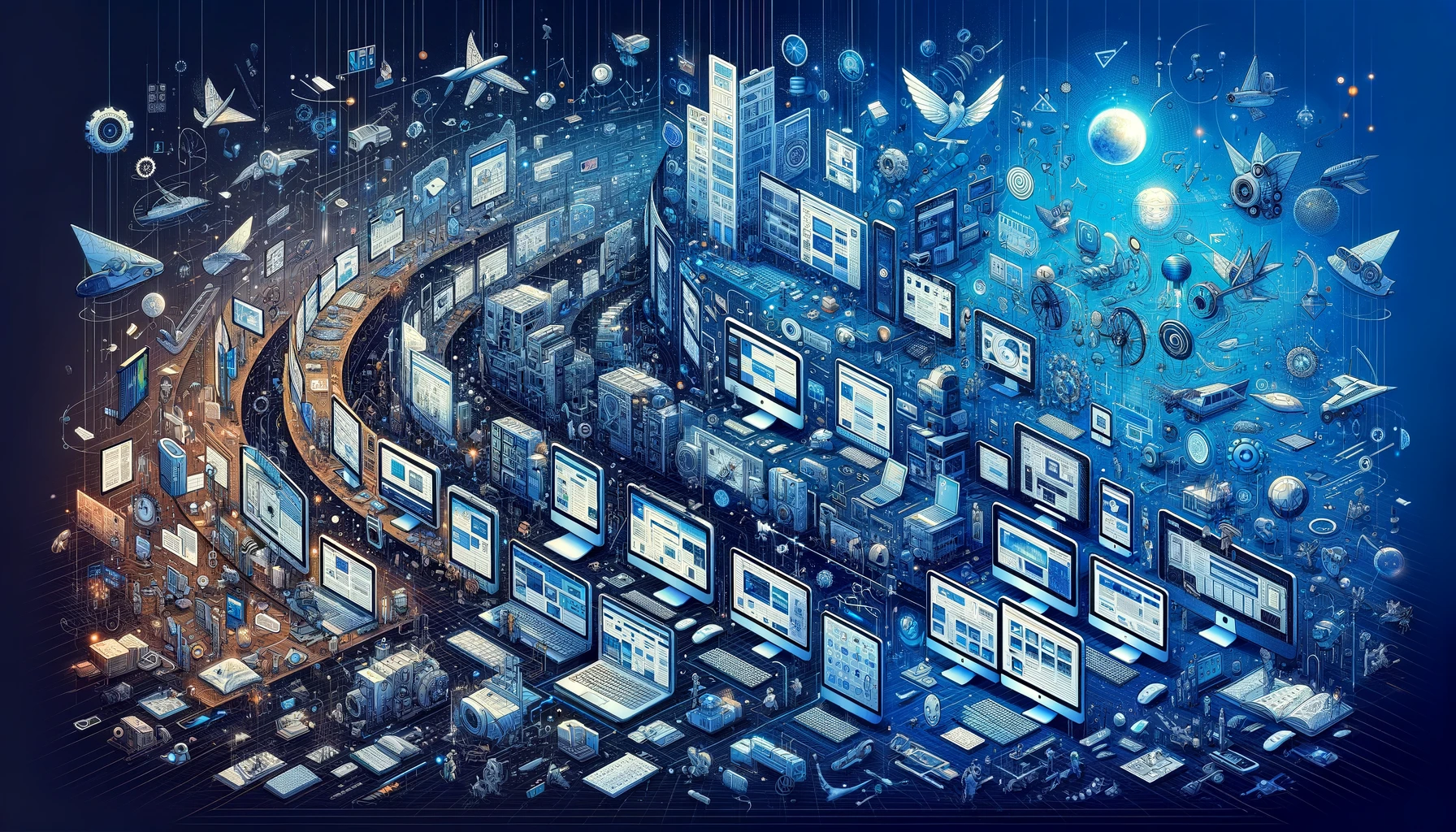 In the ever-changing world of web design, the last few years have been a whirlwind of innovation and creativity. The era of static, text-heavy websites has given way to dynamic, visually stunning digital landscapes. This transformation is not just about aesthetics; it’s about how websites interact with users and how they are perceived in the vast digital world.
In the ever-changing world of web design, the last few years have been a whirlwind of innovation and creativity. The era of static, text-heavy websites has given way to dynamic, visually stunning digital landscapes. This transformation is not just about aesthetics; it’s about how websites interact with users and how they are perceived in the vast digital world.
The Shift to Mobile-First Web Design
As mobile devices increasingly became the primary means of internet access, the web design world witnessed a pivotal shift. The focus moved from desktop-centric designs to mobile-first approaches, ensuring websites were not only viewable but also fully functional on smaller screens. This transition required a new way of thinking about layout, navigation, and content presentation.
The Rise of Interactive and Responsive Elements
Interactivity became a cornerstone of modern web design. Websites transformed into engaging platforms, offering users an interactive experience through elements like hover effects, dynamic sliders, and embedded multimedia content. Moreover, the advent of responsive design meant websites could seamlessly adapt to various screen sizes and resolutions, offering a consistent user experience across devices.
The Emergence of New Web Design Technologies and Trends
The evolution of web design is closely tied to the advancement of web technologies. The rise of HTML5, CSS3, and JavaScript frameworks brought about a new level of sophistication and capability.
HTML5 and CSS3: Enhancing Visuals and Interactivity
HTML5 and CSS3 revolutionized web design with their advanced features. HTML5 introduced more semantic elements, improving website structure and accessibility, while CSS3 brought in new styling options like gradients, transitions, and animations, allowing for more dynamic and visually appealing designs.
JavaScript Frameworks: Powering Dynamic Web Applications
JavaScript frameworks such as Angular, React, and Vue.js enabled the creation of dynamic, application-like web experiences. These frameworks made it easier to build complex, responsive, and interactive web interfaces, pushing the boundaries of what’s possible on the web.
The Integration of AI and Machine Learning
AI and machine learning have begun to play a significant role in web design, personalizing user experiences based on behavior and preferences. AI-driven chatbots and personalized content recommendations are just a few examples of how these technologies are shaping the websites of tomorrow.
The Importance of User Experience (UX) and User Interface (UI) Design
In recent years, the focus on UX and UI design has intensified. The goal is to create websites that are not only visually pleasing but also intuitive and user-friendly.
UX Design: Prioritizing the User Journey
UX design focuses on the overall experience of the user. It involves researching and understanding the user’s needs and behaviors to create a website that is easy to navigate and fulfills its intended purpose effectively.
UI Design: The Visual Aspect
UI design, on the other hand, is all about the look and feel of the website. It deals with the design of each page and interface element, ensuring that the website is aesthetically pleasing and aligns with the brand’s visual identity.
The Future of Web Design: Trends and Predictions
As we look to the future, several trends are set to shape the world of web design.
The Continuation of Minimalism
Minimalism is likely to continue dominating web design, with a focus on clean layouts, ample white space, and a limited color palette. This approach not only makes websites more visually appealing but also improves loading times and usability.
The Adoption of Dark Mode
Dark mode has gained popularity for its aesthetic appeal and reduced eye strain. More websites are expected to offer dark mode options, catering to user preferences and comfort.
The Integration of Virtual and Augmented Reality
VR and AR are set to revolutionize web design by offering immersive and interactive experiences. While still in its infancy, the potential for VR and AR in web design is vast, from virtual tours to interactive product demonstrations.
Embracing Change and Innovation in Web Design
The evolution of web design is a testament to the relentless pursuit of innovation and excellence in the digital world. As technology continues to advance, so too will the possibilities.
Partner with Freelance Designz for Cutting-Edge Web Design Solutions
The digital world is always changing, partnering with a forward-thinking web development company is crucial. Freelance Designz, with its expertise in custom web solutions, is at the forefront of this evolution. Offering a blend of creativity, technical prowess, and a deep understanding of the latest trends, Freelance Designz is the ideal partner for businesses looking to make a mark online.
Ready to embark on a journey of digital transformation? Contact Us today to explore our services and take the first step towards a stunning and effective online presence.

